Innovating with Nature: Ten of our Best Biomimicry Examples in Business
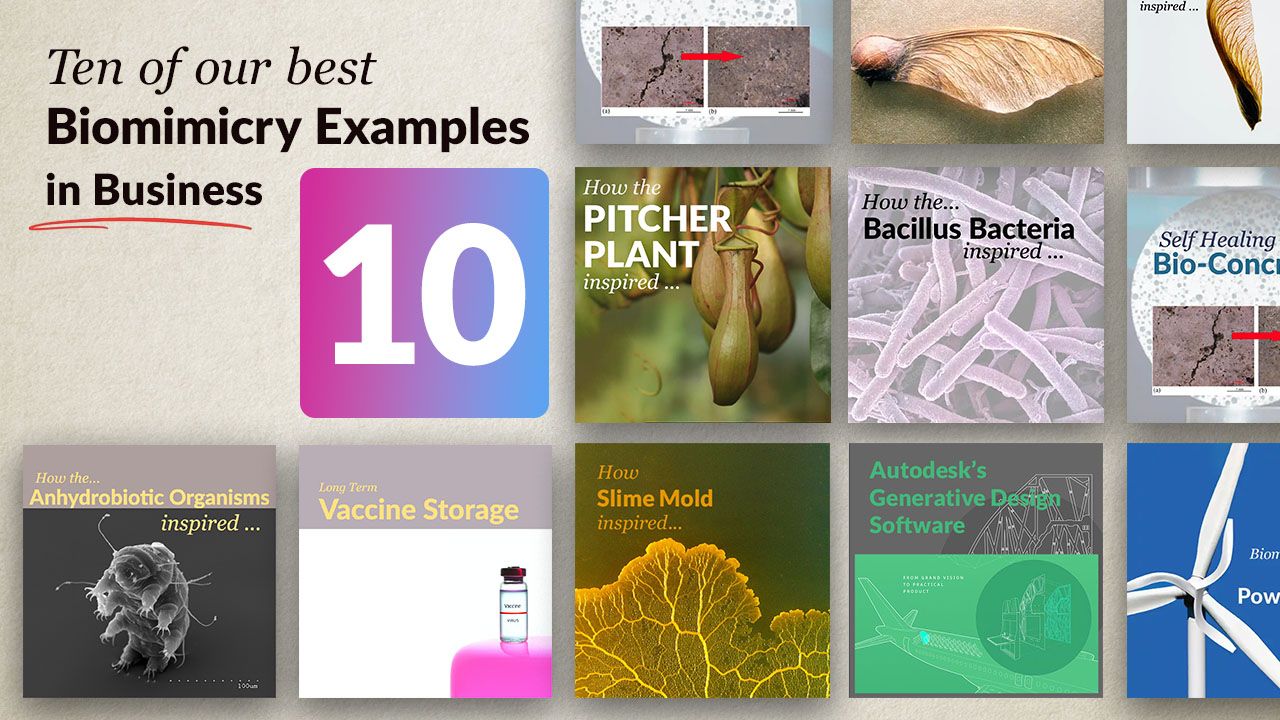
With our world now in crisis, planetary debates suggest we choose between capitalism and the planet.
What about the third choice?
‘Either or’ debates distract us from what is so desperately needed… action. The stoic philosopher in me is drawn to the single most important practice: differentiating between what we can change and what we can't. What we have influence over and what we do not. An opportunity has presented itself for our generation and next, how do we practice changing what we can by building better businesses?
The beauty of biomimicry is that it imagines another way forward.
Using an appealingly positive and pragmatic approach, in Margo Farnsworth’s latest book Biomimicry and Business - she demonstrates that business can be a force for good. By learning and utilizing the principles of biomimicry, entrepreneurs and business builders can create conditions conducive to life, and be more innovative and profitable. Farnsworth doesn’t just make this claim, she shows her readers how to do it―with jargon-free facts, entertaining case studies (from her interviews), and clear guidelines.
Side note: You can purchase the Biomimicry and Business Book on Amazon for $34 here, or on Routledge here

Biomimicry and Business: How Companies Are Using Nature's Strategies to Succeed. If you're looking to dive deeper into biomimicry and business, we highly recommend reading this.
How can biomimicry impact your business?
Biomimics don't ask, ‘how can I or my business USE nature’
They ask, ‘how can my product or business FUNCTION like nature’
And then they learn FROM nature to get them there.
"At its most practical, biomimicry is a way of seeking innovative and sustainable solutions by borrowing life's blueprints, chemical recipes and ecosystem strategies... At its most transformative it can bring businesses and us into the right relationship with the rest of the natural world."
The Biomimicry Spectrum
The difference between Established Biomimicry and Pioneering Biomimicry

Biomimicry is a spectrum, from shallow to deep innovation. Therefore, biomimicry can mean different things to different people. To the business professional, biomimicry can mean organizational and product innovation or sustainability, but preferably both.
Established biomimicry is mimicking what others have already figured out. It's the meta version of biomimicry. The best innovators know when it's time to invent and when it's time to innovate... and as any biomimic worth their salt will tell you - there's no point re-inventing the wheel.
Pioneering biomimicry is right on the cutting edge of innovation, and it's useful for solving complex and critical challenges. Most of the note-worthy biomimicry case studies and biomimicry examples are examples of pioneering biomimicry.
Where Might Biomimicry Not Work in Business?
Biomimicry doesn’t work in businesses that do not seek innovation.
All businesses say they want innovation, but the truth of the matter is what they say and what they do are two different things.
Innovation is hard. It requires real-world and money-on-the-table sacrifices, and saying no. A business can do anything, just not everything.
Biomimicry is innovation inspired by nature, and if a business isn’t ready or willing to change, then biomimicry isn’t for that said business (and that’s okay).
Biomimicry isn't well suited to businesses that lack an ethos, respect for, or responsibility for our fellow species and our home.
Biomimicry has an ethos built in. This is what science has been missing, and quite possibly what got us into these ecological crises. Biomimicry puts all Life at the center, not just humans.
Biomimicry businesses are those that go beyond just making profits and wish to create a net positive impact on all Life. This is where biomimetics and biomimicry differ.
An unwillingness to practice green chemistry (aka life-friendly chemistry)
Chemistry underpins everything, and it’s everywhere.
Understanding it can assist you to improve and advance almost anything.
In almost every sphere of science, technology, and industry, you find chemistry at the heart and start. Chemistry is the backbone of biology, and thus essential to biomimicry.
Green chemistry is the design of chemical products and processes that reduce or eliminate the use and generation of hazardous substances. You can’t get any greener than emulating nature’s chemistry!
A note here from the Biomimicry and Business author Margo Farnsworth
"Using Green Chemistry in product development advances a product from simply being inspired by nature to actually creating conditions conducive to Life.
However, it's important to note that green chemistry is not always a requirement for practicing biomimicry. Some businesses are moving forward with products and processes that emulate nature’s strategies without green chemistry.
The strategy of using green chemistry is a pathway into more advanced 'Pioneering Biomimicry'".
Our Top 10 Biomimicry Examples in Business:
There are a growing number of successful businesses born out of biomimicry.
Here are a few successful examples of biomimicry across different business sectors, from design to software development, engineering to material science, and everything in between.
Biomimicry, Packaging and Cold Chain Logistics: Greenpods
How Plant-Based Volatiles Inspired Packaging Sachets
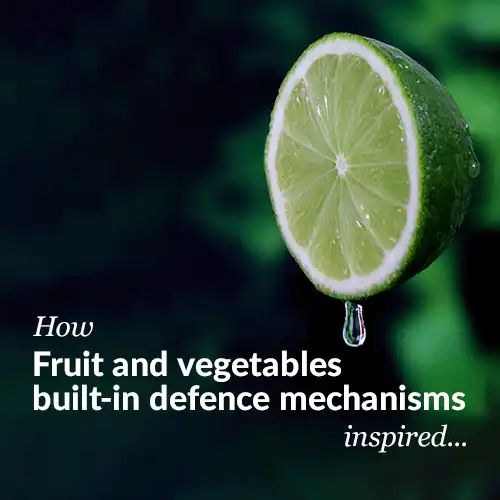
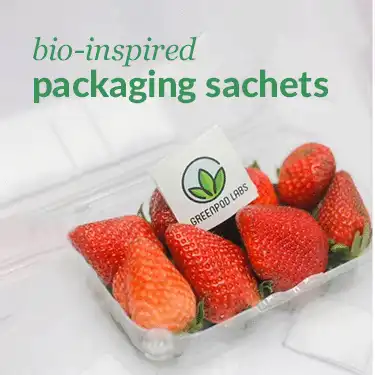
Meet the Biomimicry Institutes Ray of Hope Prize Winner - Greenpod Labs. With ~40% of fresh produce lost before it reaches consumers, Greenpod Labs have created bio-inspired packaging sachets that mimic the built-in defence mechanisms within specific fruits or vegetables, in order to slow down the ripening rate and minimize microbial growth. These are called plant-based volatiles, and the right formulation reduces the need for cold storage and cold supply chains. The only flaw with this biomimicry business is that they didn’t call it Berry Cool.
🍓 Business inspired by: Fruit and vegetables' built-in defence mechanisms
📍 Where: India
🎯 Innovation / Function: bio-inspired packaging sachets
✏️ Website: Greenpod Labs
Biomimicry and Organisational Design: USGBC
How flamingos, fungi and trees inspired inclusive business organizational structures


Reference: Fast Company - Biomimicry Challenge:
IDEO Taps Octopi and Flamingos to Reorganize the USGBC
To foster a stronger sense of community and challenge traditional top-down governance models, the United States Green Building Council (USGBC) adopted a strategy that centers around the interdependence between fungi and trees, as well as keystone species. All with the goal to better coordinate chapters within their national body.
The collaboration between IDEO and USGBC resulted in the development of a business organisational structure that draws inspiration from two reproductive strategies in nature. Additionally, keystone species inspired the USGBC to create multifunctional, temporary networks aside from geographic chapters that could connect and unite members with national staff around common goals and expertise.
🦩 Inspired by: Flamingos, fungi and trees
📍 Where: Washington DC, USA
🎯 Innovation / Function: Community-based governing and organizational structure
✏️ Who: IDEO and the United States Green Building Council, with support from the Biomimicry Institute
🐋 Interested in diving deeper: Here is the full article, explaining the nature-inspired development of the USGBC business structure.
Biomimicry and the Built Environment: Concrete
How Bacillus Bacteria Inspired A Self-Healing Bio-Concrete
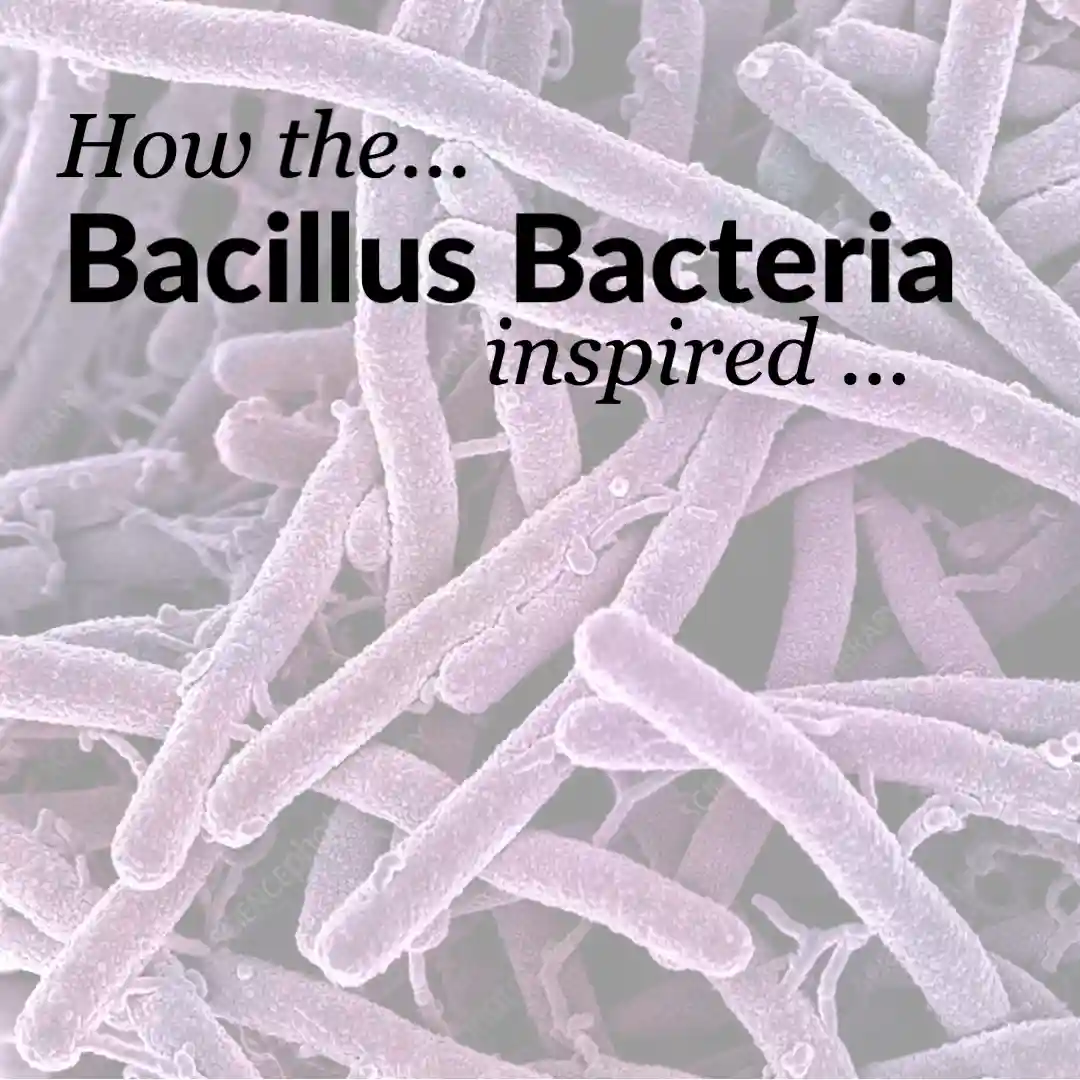
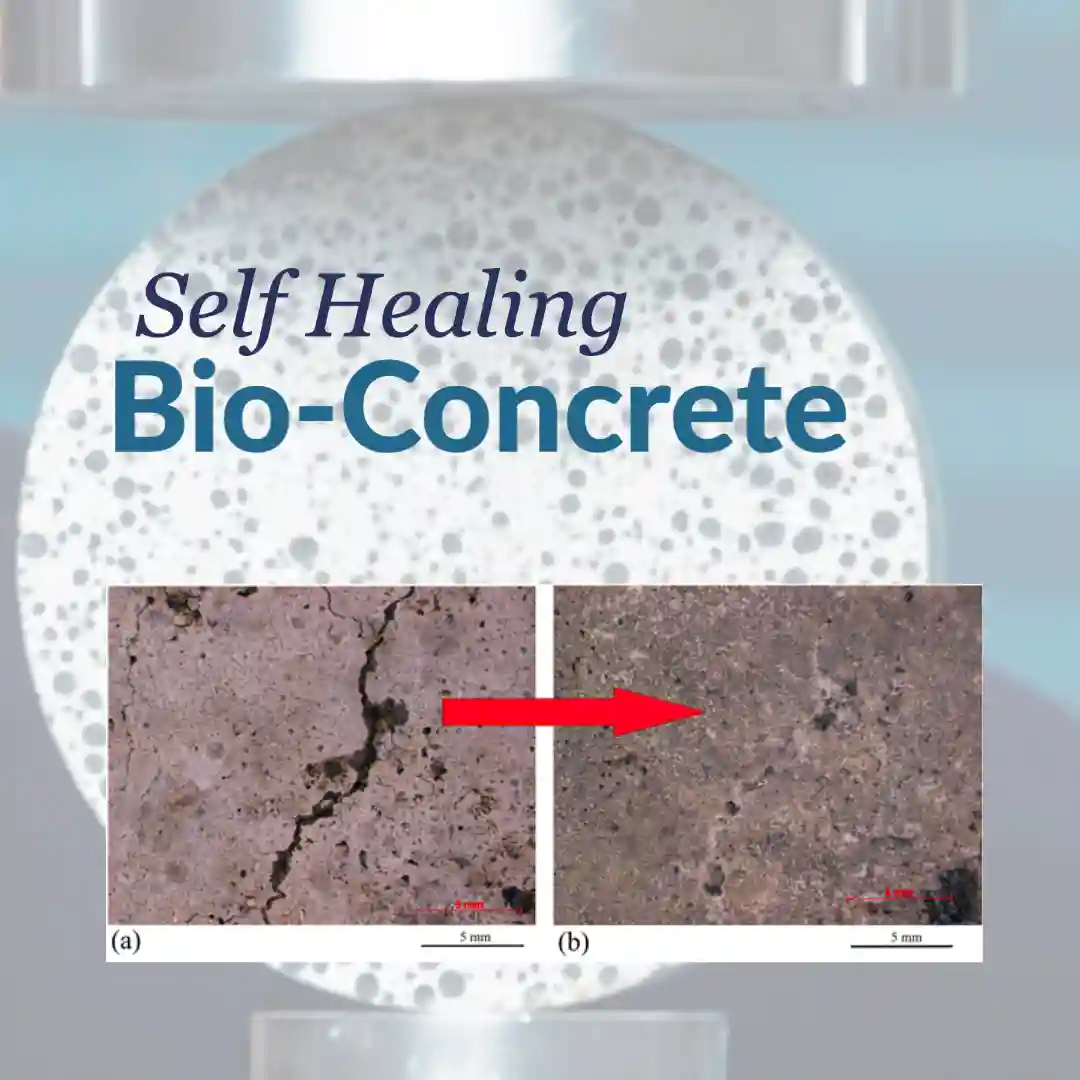
Concrete is at the heart of the built world. As with anything else in this world, it degrades over time. And with the amount of concrete that we use, it costs tens of billions of dollars the world over to repair damaged concrete. And that’s every year!
What if we had concrete that heals itself as our own body does? That’s exactly the solution Hendrik Marius Jonkers came up with when he found rock-dwelling, limestone-producing bacillus bacteria. These bacteria lie dormant inside the concrete. Anytime a crack occurs in the material and the bacteria is exposed to moisture and air, it springs back into action and produces limestone! The bacteria has a lifespan of 200 years and can save the world billions of dollars and a lot of time.
🦠 Biomimicry business inspired by: Bacillus Bacterium
📍 Where: Netherlands
🎯 Innovation / Function: Self-repairing concrete
✏️ Who: Hendrik Marius Jonkers
Biomimicry and Product Design:
How sycamore seed pods inspired an elegant and efficient ceiling fan

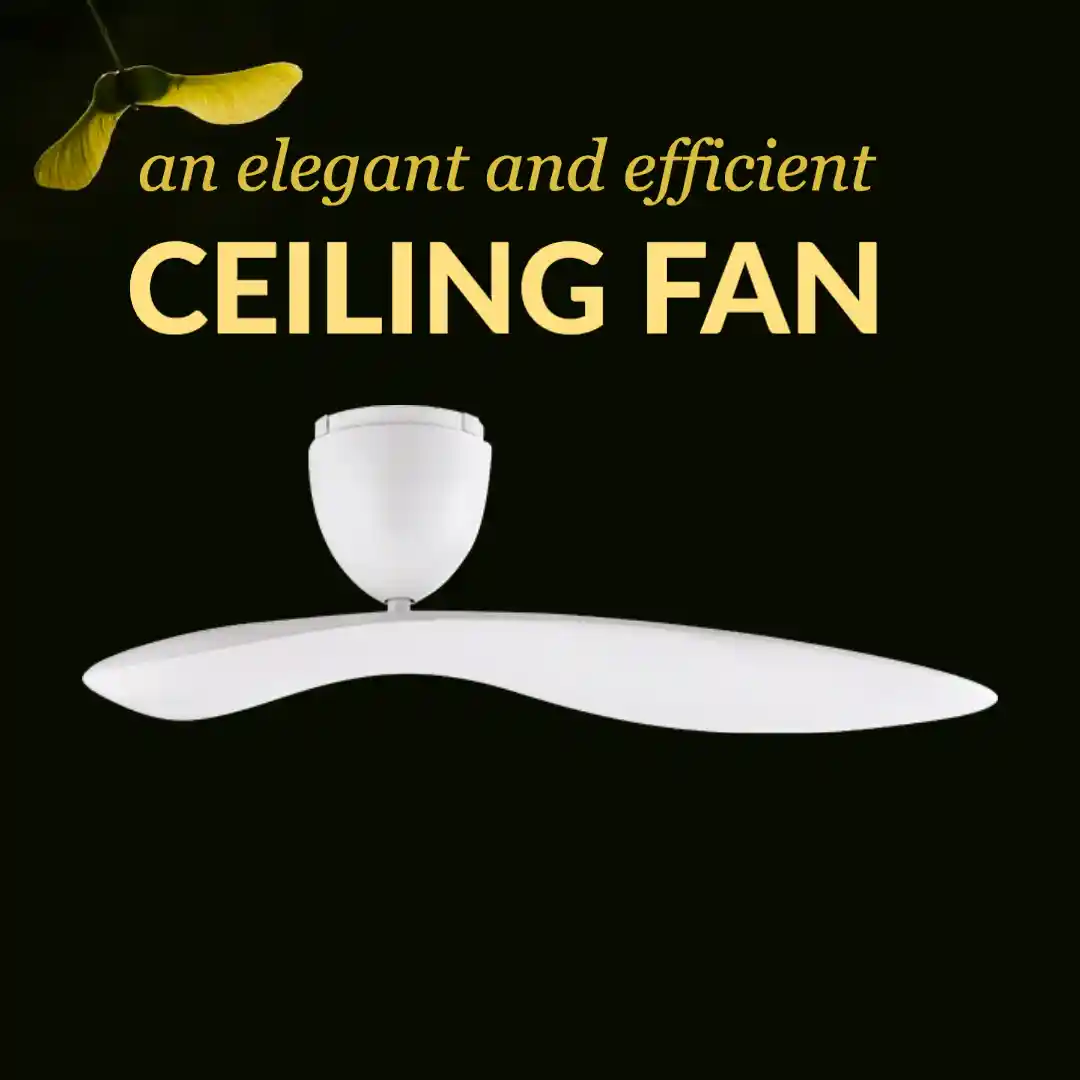
Simplicity is any designer's greatest complexity. The beauty of nature is its simplicity. and the elegance of its form and function. The sycamore seed pod design allows it to auto-rotate in the air, floating for a good while longer and in turn travel longer distances. The ceiling fans designed by Sycamore Technologies based on these seed pods look aesthetically pleasing, having won many design awards and also provide excellent airflow at low rpm, run quieter and are highly energy efficient due to their aerodynamic designs. A quiet introspective look at nature can teach us a lot about nature's simple solutions to complex human problems.
🌱 Biomimicry business Inspired by: Sycamore seed pod
📍 Where: NSW, Australia
🎯 Innovation / Function: Beautiful and efficient ceiling fan
✏️ Who: Sycamore Technology
Biomimicry and Material Science: Adaptive Surface Technologies
How a carnivorous plant inspired self - cleaning surfaces
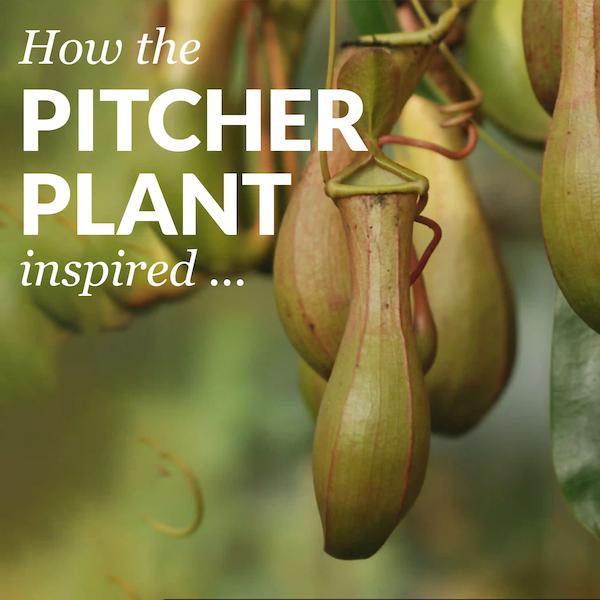
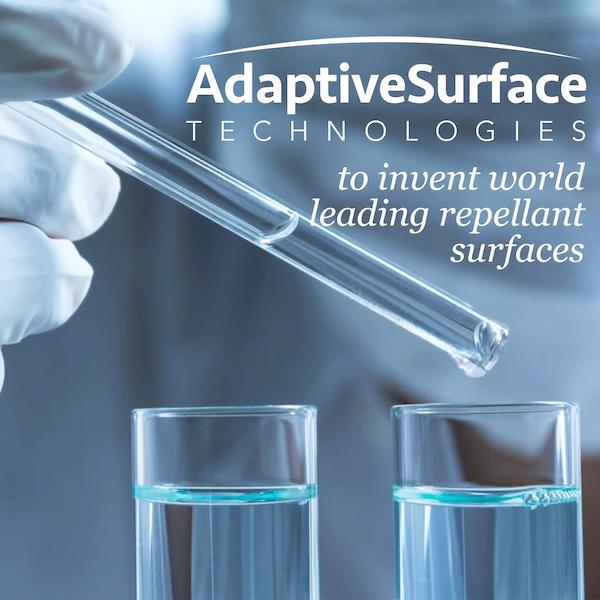
Harvard researcher Joanna Aizenberg’s group’s work on the omniphobic surfaces known as SLIPS, short for slippery liquid-infused porous surfaces. They were on the hunt for materials that could repel both oil and water to create surfaces for handling biomedical fluids, transporting fuel, preventing biofouling, and repelling water to prevent ice formation.
Enter the pitcher plant: The pitcher plant has developed an extremely slippery surface that can trap insects. The surfaces of Nepenthes pitcher plant rims are super-slippery thanks to a microtextural roughness, with tiny pores that lock in a lubricating layer of water.
When unlucky insects walk on this slick surface, they cannot hold onto this low-friction surface and they fall into digestive juices at the bottom of the plant’s bloom. How’s that for millions of years of evolution?
🪴 Biomimicry Business inspired by: Pitcher plant
📍 Where: Massachusetts, USA
🪣 Innovation / Function: Repellent liquid coating for containers (paint cans, ship hulls, etc)
✏️ Who: Adaptive Surface Technologies
Curious to learn more: Read this article for an in-depth explanation of the Biomimicry Design Framework used to spark this biomimicry business
Biomimicry and Health Care Businesses: Vaccine Storage by Nova Laboratories
How anhydrous organisms helped to fight COVID-19
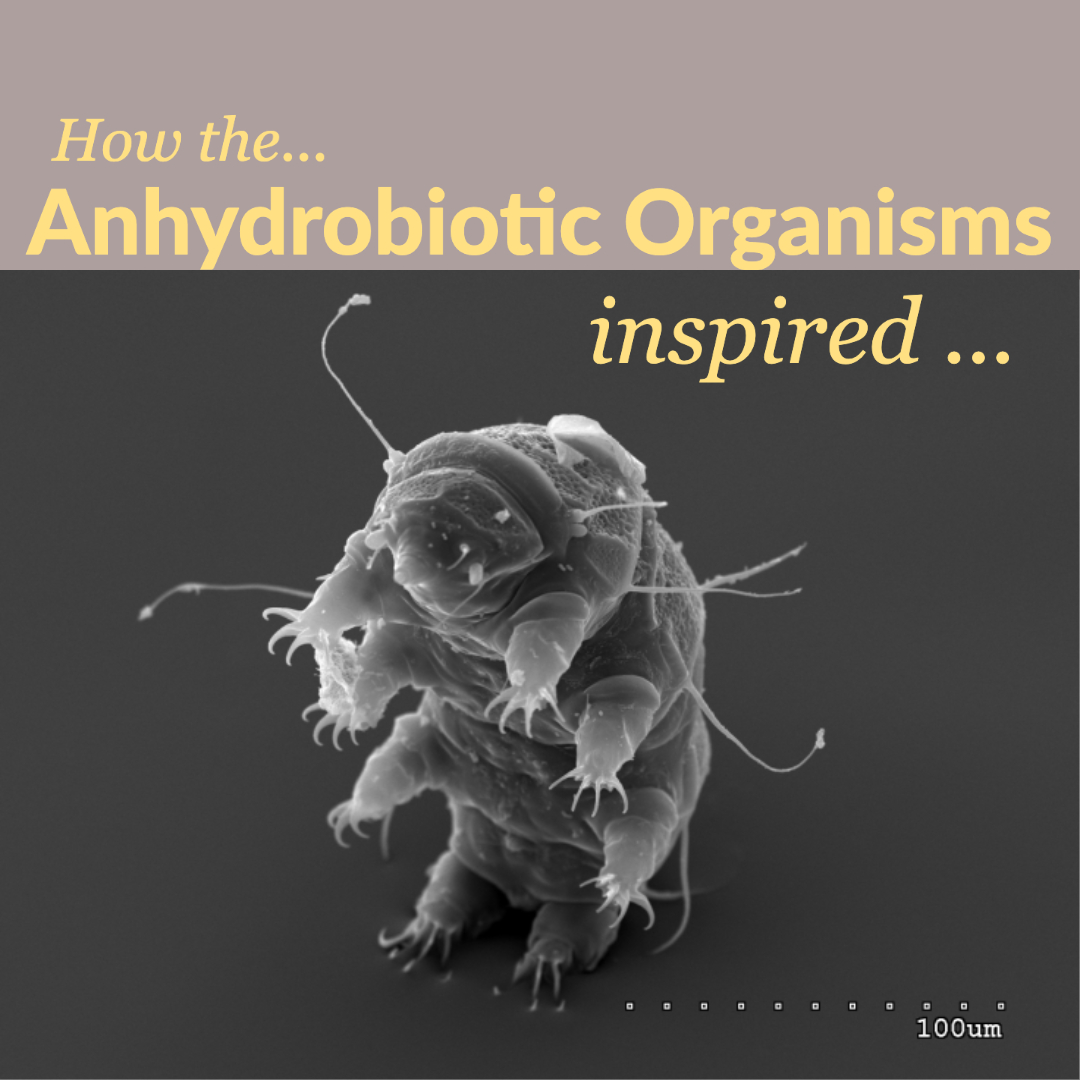
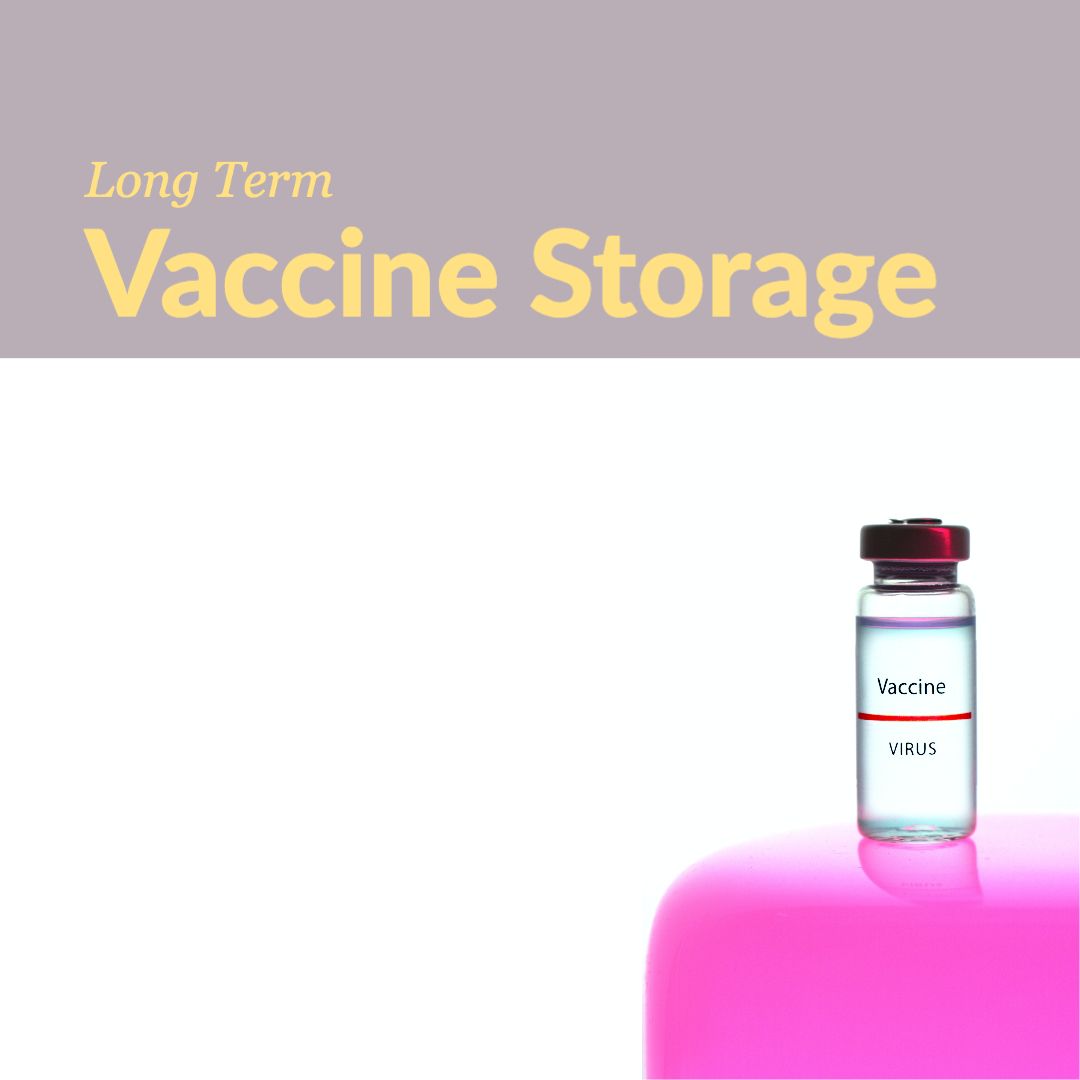
As we learnt during the COVID-19 pandemic, quick, effective, and wasteless delivery of vaccines is extremely crucial for saving millions of lives worldwide. As it turned out though, we were completely unprepared for the pandemic, and vaccine delivery was especially poor in the developing world. The reason is that vaccines need to be transported in frozen conditions which are not always met.
Nova Labs has patented a method where the vaccines are first dehydrated using sugar syrup which prevents bacteria from incubating and growing in the vials. Once injected, the body fluids reactivate the vaccine and it can start its normal delivery process within the body. A technology like this has the potential to avoid the next public health disaster and allows us a chance to learn from our experiences the previous ones.
🪲 Biomimicry business inspired by: Resilient anhydrous organisms
📍 Where: Leicestershire, UK
🎯 Innovation / Function: Long-term vaccine storage
✏️ Who: Nova Laboratories
Biomimicry and the Renewable Energy Business: Biome Renewables
How Maple Seeds Inspired More Efficient Wind Turbines
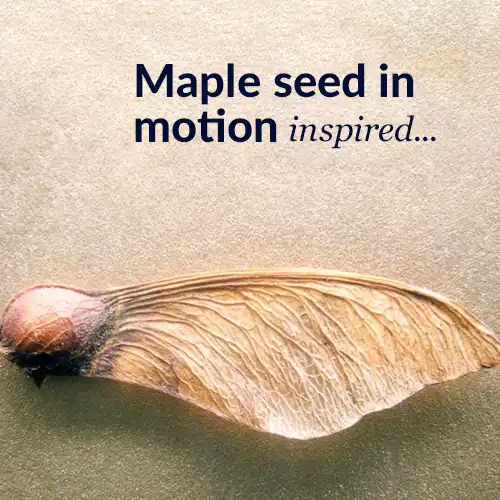
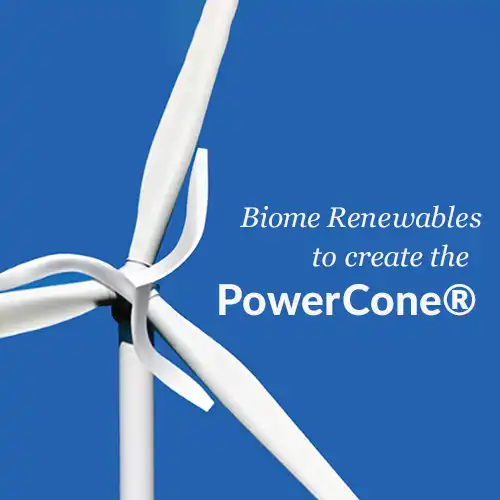
Biome Renewables has focused on sustainable renewable energy, specifically wind turbines. Their innovation is the PowerCone® - a wind turbine retrofit inspired by the aerodynamics of a falling maple seed, moving through the air with a pattern of least resistance. The PowerCone, which is a second smaller rotor bolted to the hub of existing wind turbines, can increase the annual energy production of a wind turbine while minimizing the number of loads and vibrations experienced by the turbine. I had a pun about wind to include here, but it blows.
🚁 Biomimicry Business Inspired by: Maple seed in motion
📍 Where: Canada
🎯 Innovation / Function: the PowerCone®
✏️ Website: Biome Renewables
Biomimicry and Architecture:
How modeling Ecosystem Services inspired the World’s First ‘Living’ Building
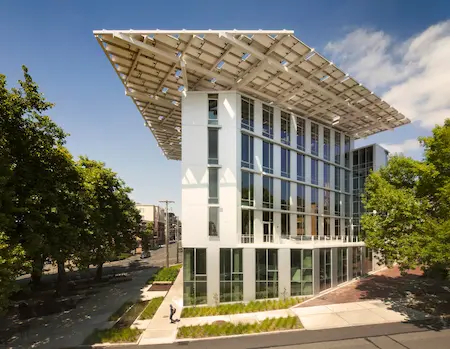

The Bullitt Centre is the world's first and most regenerative office building, where every form, process, and system is interconnected. The building is modelled as a "living organism", using adaptive cyclic processes that manage water, energy, and all its resources efficiently, with built-in resilience. And the best part? The Bullitt Centre uses only as much energy and water as it takes in, producing no waste.
The architects of the Bullitt Centre went to great lengths to meet their aggressive net-zero target. Seattle is often drab and overcast, but parametric modeling software was used to develop the most efficient geometric solution for the highest solar energy conversion. All of the building's ecosystem services, such as greywater and dry waste recycling, rainwater, and solar energy harvesting, are intricately measured and managed by the building's central neurology. The Bullitt Centre is a prime example of what's possible in the movement towards regenerative architecture and resilient cities.
🌳 Biomimicry business inspired by: Douglas Fir Forest & Ecosystem services
📍 Where: Seattle, US
🎯 Innovation / Function: Living building
✏️ Designed by:
🕸️ Website: The Bullitt Center
Biomimicry in Software Development:
How Adaptive Organisms, Slime Mold Inspired the Future of Airplane Travel
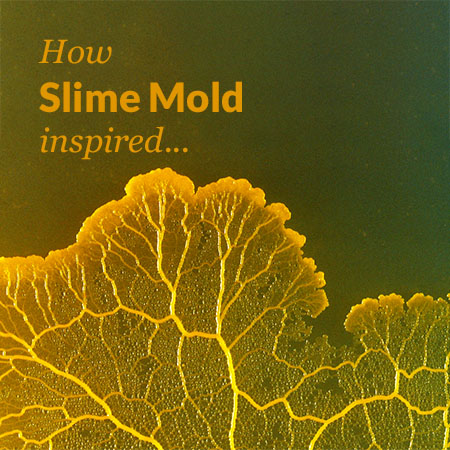
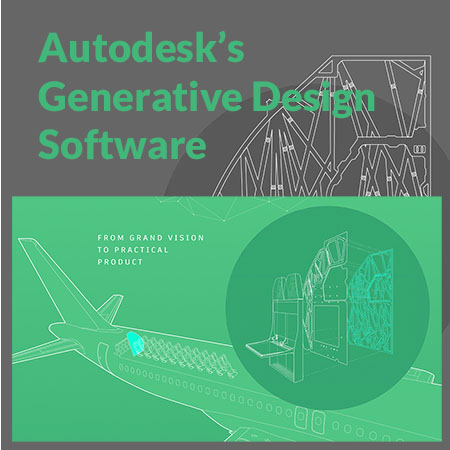
Nature excels at local sourcing and the efficient use of materials. Recent developments in 3D printing allow us to primitively mimic nature’s craftsmanship. Autodesk has developed Project Dreamcatcher, which takes advantage of nature’s research and development and allows users to generate thousands of generative design solutions that meet a variety of constraints in the real world. This can lead to less wasteful designs which might turn out as beautiful as nature itself. One such user is Airbus.
Airbus has been on a mission to envision the future of aviation, creating a concept plane for 2050. As with all grand adventures, each begins with a single step. Airbus partnered with Autodesk to design an aeroplane bionic partition with strict restrictions on weight, and energy dissipation in the event of a crash. The resulting generative lattice design is inspired by growth patterns of slime mold and mammalian bones.
🦠 Inspired by: Slime mold and (mammal bones)
📍 Where: California, USA
🎯 Innovation / Function: Real-time resource and time-efficient generative design tool
✏️ Who: Autodesk and Airbus --> See here for a deeper dive into Biomimicry, Bio-inspired AI and Generative Design
Three Biomimicry Books for Business Builders
For now, if you’re interested in diving deeper, here are three books for biomimicry business leaders:
- Biomimicry and Business by Margo Farnsworth
Biomimicry and Business: How Companies Are Using Nature's Strategies to Succeed - Teeming by Tamsin Woolley-Barker
Teeming: How Superorganisms Work Together to Build Infinite Wealth on a Finite Planet (and your company can too) - Leadership Safari by Silvia Mirandola
Leadership Safari: Meet the experts in the African savanna
In closing, biomimicry offers businesses many existing and yet-to-be-discovered innovations.
We will be taking a closer look at Biomimicry Life's Principles and how they apply to businesses in the near future ... Sign up for our Living Loop newsletter to stay tuned!
Wild regards
Melissa Sikosana & Alistair Daynes
